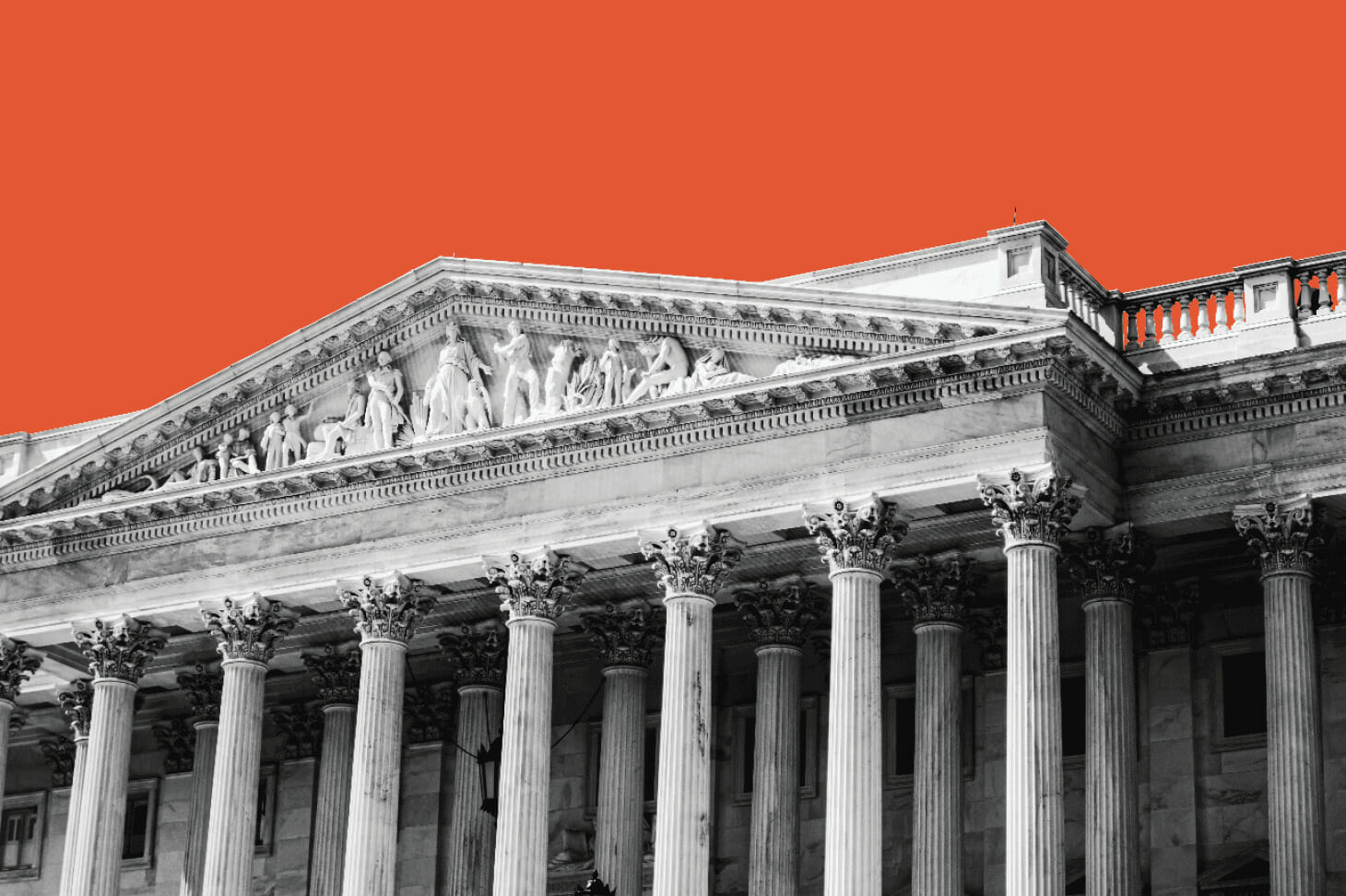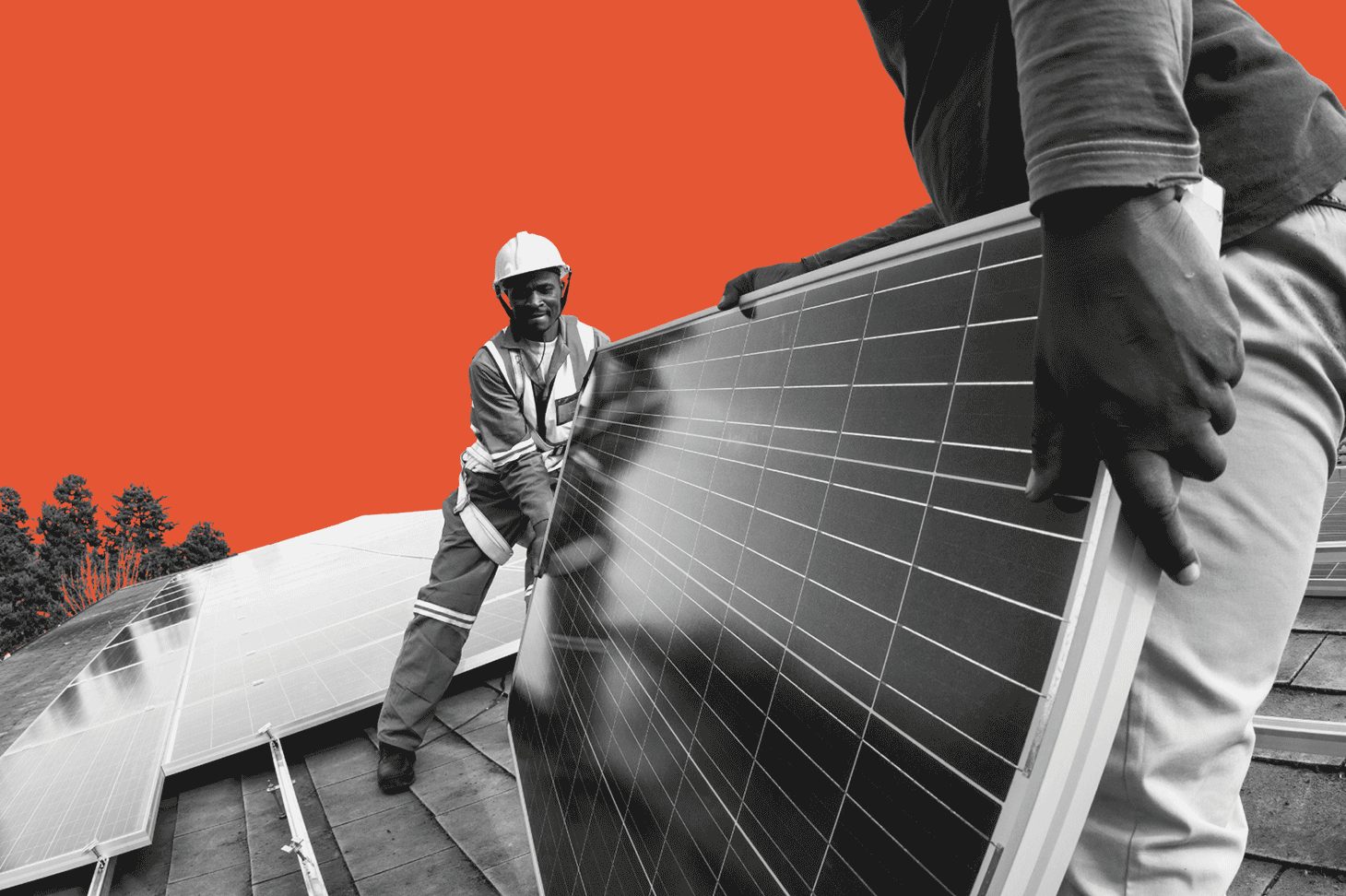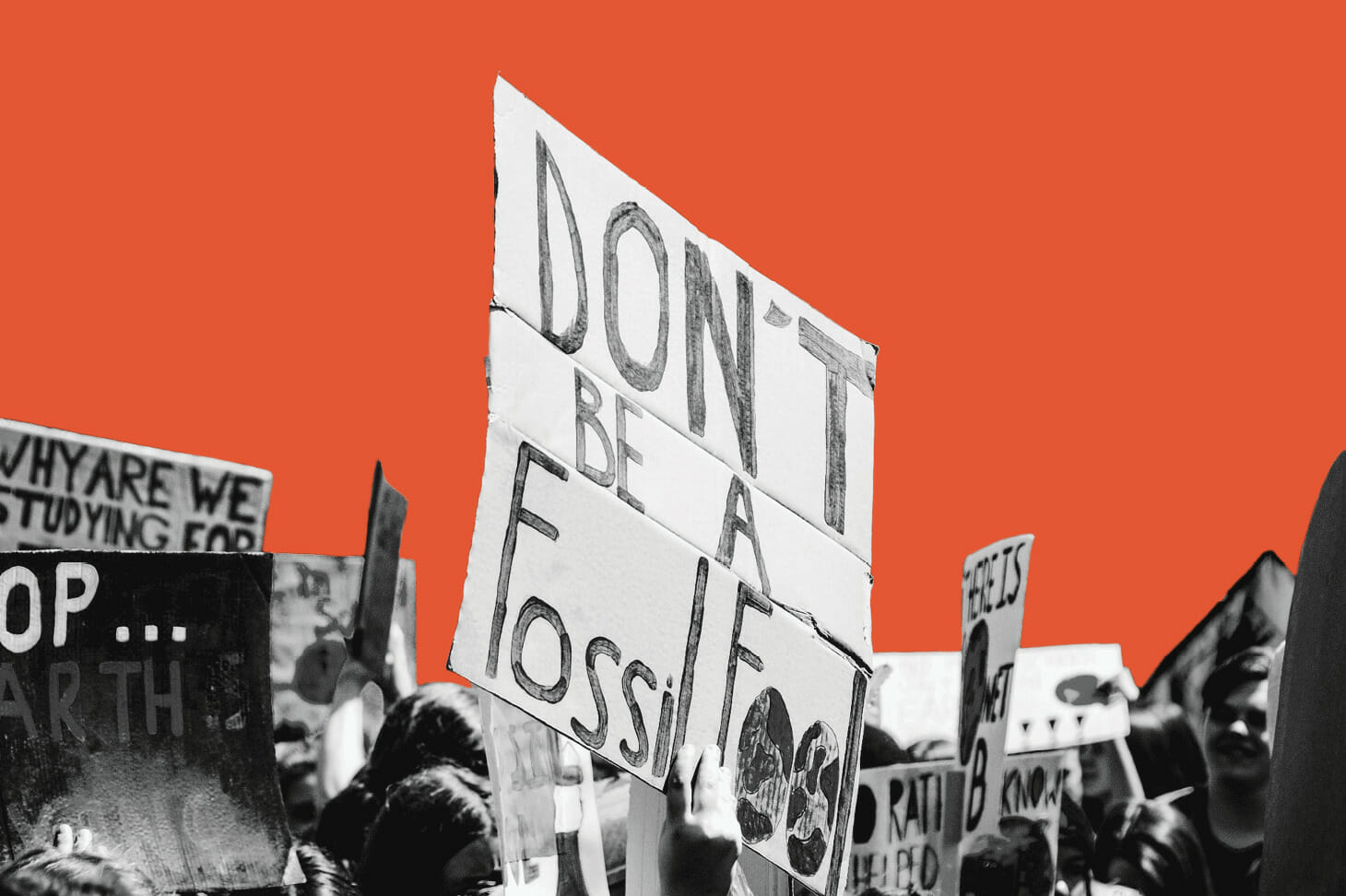A cheat sheet for this guide is available here. See CCNow’s recent webinar with Solutions Journalism Network on climate solutions reporting here. This resource is available in Spanish here.
This document was prepared collaboratively by Covering Climate Now and Solutions Journalism Network.
The climate emergency is a huge, multi-faceted story for every beat in the newsroom. So far, most climate coverage has focused on the problem itself, which makes sense; scientists call it an emergency for a reason. This reporting has helped audiences better understand that climate change is already happening; that it’s caused largely by burning oil, gas, and coal; and that the resulting heatwaves, droughts, and floods are hurting people, right now. That’s the bad news, but it’s only part of the story. The good news is that climate change is solvable. And newsrooms are starting to broaden their reporting to make solutions a bigger part of the coverage.
Reporting on solutions does not mean downplaying the dangers, sugar-coating the facts, or urging a particular outcome. It means telling the entire climate story and helping audiences and policymakers make informed choices about what to do going forward.
Solutions reporting is not just good journalism; it’s also what news consumers say they want. They find solutions-focused stories more engaging than traditional problem-focused journalism, as well as more relevant to their own lives.
Like climate change itself, the solutions side of the story covers so much ground that it can feel overwhelming. So let’s start with some basics: The big goal is to reach “net zero” heat-trapping emissions by 2050, which the United Nations Intergovernmental Panel on Climate Change’s “Global Warming of 1.5 degree Celsius” report said could spare civilization from the most severe impacts. Hitting that 2050 target will require rapidly phasing out oil, gas, and coal burning; reversing deforestation; shifting from the current industrial model of agriculture to climate-friendly farming methods; and much more. Besides ending new emissions of greenhouse gases, humanity must also remove sizable amounts of the carbon dioxide that’s already in the atmosphere overheating the planet.
All this amounts to a herculean task. The costs will be high, but so will the rewards. And make no mistake: The costs of inadequate action would be catastrophic. Bear in mind one of the defining aspects of the climate challenge — how quickly emissions must fall. To avoid the worst, said the scientists who co-authored the ‘1.5 degree C’ IPCC report, global emissions must be cut by 45% by 2030, a massive reduction that, they said, will require “transformational” change in every sector of the global economy, from energy, transportation, and agriculture to housing, finance, and industry.
The media sector needs to transform as well.
Just as the causes and dangers of climate change deserve to be featured front and center in our reporting, so do the solutions. Running stories about solutions helps audiences understand what can be done about the climate emergency, and empowers them to press governments, businesses, and other powerful interests to change course. In short, better news coverage is itself an essential climate solution.
This document offers guidance on how to report on climate solutions with journalistic rigor and integrity. Good solutions reporting is not about cheerleading for this or that approach; it’s about interrogating those approaches to inform the public and policymakers about what works and what doesn’t.
There are climate solutions related to politics, business, economics, technology, culture, and how we, as people, live and work. Below, we outline by category some prompts for story ideas. But first we discuss an overarching theme that should permeate all these categories — equity and justice — and we share a framework created by SJN for how to conceptualize and carry out solutions reporting.
JUMP TO CLIMATE SOLUTIONS STORY CATEGORIES
Equity and Justice
Solutions are particularly urgent for the people who suffer disproportionately from the climate crisis: the poor, people of color, Indigenous people, women, children, and future generations. These communities have contributed the least to the pollution that is over-heating the planet, yet they often bear the brunt of the impacts and have less financial resources to cope. Some of these communities nevertheless have proven records of effective climate action.
For example, Indigenous peoples occupy lands and seas that contain an estimated 80% of the world’s remaining biodiversity. Peer-reviewed science documents that protecting Indigenous peoples’ human and property rights so they can manage their territories without threats of violence and intimidation is the most successful way to protect biodiversity. Meanwhile, climate injustice is also generational; young people have done little to cause the crisis that will define the rest of their lives. Their opinions deserve to be heard not only as a matter of basic fairness but also because their activism has become perhaps the single most powerful force pushing governments and corporations to change their behavior.
Learn more: CCNow: “What We Mean When We Talk About 1.5 Degrees.” The Solutions Project: “Covering Climate Equitably: A Guide for Journalists.” Society of Environmental Journalists: “Environmental Reporting Through an Indigenous Perspective.”
A Framework for Solutions Reporting
A framework developed by SJN provides guidelines for climate solutions reporting. Solutions journalism is rigorous, evidence-based reporting that responds to big problems facing society. The aim is to illuminate, investigate, and hold accountable solutions put forth by governments, businesses, nonprofits, activists, universities, and other stakeholders. SJN encourages journalists to consider the following questions in such reporting:
- What is the solution being put forward — and how has that solution worked, or not worked?
- What evidence, such as on-the-ground experience or empirical data, indicates that the solution is effective? In particular, has it been effective for the communities most affected by the climate crisis?
- What insights and information from this story could help other stakeholders better respond to the problem?
- What are the limitations or short-comings of the potential solution being interrogated? How can these be overcome?
Learn more: CCNow’s Talking Shop webinar: “Climate Journalism Through a Solutions Lens,” with a presentation by SJN. See SJN’s Solutions Story Tracker, a curated database of solutions stories, including hundreds focused on climate published by news outlets from around the world.
Categories of Climate Solutions Stories
There are countless ways for governments, businesses, individuals, and civil society to contribute to climate progress. For story ideas, see the example stories cited after each section below. Here, we group climate solutions into five categories: politics and government, economics and business, technologies and practices, civil society, and culture.

Politics and Government
The government policies that shape the economy are arguably the biggest drivers of climate change. The private sector, with its control of financial capital, is immensely influential, but it deploys that capital in response to the laws, regulations, and systems of taxes and subsidies imposed by governments. Defusing the climate emergency will require government policies that rapidly phase out fossil fuels and deforestation; encourage renewable energy sources and climate-friendly forestry and farming practices; and help people and economies adapt to a warming planet. The solutions put forward by governments, from local to global, deserve media coverage and scrutiny.
So do a wide range of other solutions in this category, including voting, lobbying elected officials, joining activist groups, grassroots organizing, protest marches, and civil disobedience. Solutions reporting should also highlight the forces blocking progress and how those can be overcome; those are key limitations. For example, reporters can link weak government policy with corporate campaign contributions and point out how citizens can challenge those practices — for example, by getting money out of politics.
Below are some questions to get you started on climate solutions reporting within the political sphere:
- Where do elected officials in your area stand on climate change? Look at everyone from mayors and city council members to state legislators and governors to national legislators, presidents, and prime ministers. Do they grasp the urgency of action? What policies do they endorse and oppose, and how do those policies square with what science demands? What have the officials actually achieved? (Hint:track local, state, and national climate action plans to see what solutions they are pursuing.)
- Who are the key non-governmental voices in your area advocating climate action? What have been their most effective actions to date? Are they pressuring companies as well as governments, and how successfully? A just transition for the communities and workers that historically have relied on fossil fuel production is essential–what role are workers, communities, and other stakeholders playing in that process?
- Trillions of dollars will be spent in the decades ahead on climate action. For example, in the United States, the Inflation Reduction Act could enable spending an estimated $369 billion. How, exactly, is that money being spent? Which agencies are distributing the funds, and how are they making decisions? How can citizens, NGOs, and other stakeholders influence these decisions? How well are the projects succeeding?
- What’s being done to fight climate disinformation? Who is funding disinformation, who is responsible for countering it, and are they succeeding?
Example stories: Grist: “Congressional Democrats have a new plan to combat plastic pollution”; the Guardian: “Germany’s €9 Train Tickets Scheme ‘Saved 1.8m Tons of CO2 Emissions’”; The New York Times: “How to Cut U.S. Emissions Faster? Do What These Countries Are Doing.”; The New York Times: “Tiny Vanuatu Uses Its ‘Unimportance’ to Launch Big Climate Ideas”

Economics and Business
What consumers and companies around the world do, and don’t do, will profoundly affect how much hotter Earth gets. Their behavior is strongly influenced by the economic policies that governments implement, including subsidies, investments, taxes, and regulations. It is also shaped by companies’ business models, the demands of investors and consumers, and the growth imperative embedded in modern capitalism. Journalists need to scrutinize all these factors to gauge how they affect the goals of slashing climate pollution and adapting to climate impacts.
For example, putting a price on carbon deserves careful interrogation. Emitting carbon harms society by intensifying global warming. Putting an appropriate price on carbon, economists say, would reduce emissions by incentivizing businesses and consumers to switch to low- or zero-carbon alternatives. Two of the most widely discussed ways to price carbon are a carbon tax and a “cap and trade” system. Several carbon tax proposals have been introduced in the US Congress, and a number of countries, regions, and local governments have implemented carbon pricing schemes.
As companies make commitments to reduce climate pollution, journalists are called to investigate whether these efforts are genuinely effective or greenwashing. Here, fossil fuel companies occupy a special category. ExxonMobil and other fossil fuel titans have a long, well-documented history of lying to the public about climate change. Lately, the industry’s messaging has shifted from denial to delay: Often, the “solutions” they favor would continue their current business models rather than embrace the rapid phase-out of fossil fuels that science dictates. Highlighting these contradictions can help audiences judge how valid the industry’s responses to the climate emergency truly are.
Pledges to achieve “net zero” emissions also deserve scrutiny. “Net zero” means that a country or company will produce no more emissions than it “offsets,” usually by making or financing emissions reductions elsewhere. For example, a company can offset its own emissions by paying someone else to plant trees. But serious questions have been raised about the effectiveness of this approach. Carbon offsets can be abused and worsen environmental injustice. Probing “net zero” strategies, as well as the carbon offsets used to pursue them, is an example of solutions journalism that holds stakeholders accountable.
Below are some questions to get you started on reporting climate solutions through an economics and business lens:
- If government officials in your area are considering pricing carbon, check out how well carbon taxes and cap-and-trade systems have worked for other jurisdictions, including California and the European Union. (Hint: Returning such tax revenues to the public, as mandated by the Energy Innovation and Carbon Dividend Act introduced in the US Congress, can shield poor and working class people from the resulting higher prices for carbon-based goods and services.)
- What are central banks and other regulators doing to address the risks from climate change? What are organizations like the World Bank doing to help fund climate initiatives?
- How much does the government in your area subsidize fossil fuel companies, including via tax loopholes? What are the barriers to cutting subsidies? How are individual businesses working towards sustainability? What role do their stockholders and employees play in motivating them? Are they changing their supply chain to become more sustainable?
- How are electric utility companies enabling or inhibiting a greener power grid? Are they making it easy, for example, for property owners to install solar panels, or are they rigging the system against change?
- How are businesses using advertising and other public relations strategies to shape views around climate change, fossil fuels, and renewable energy? What strategies are working to either mislead or educate the public?
Example stories: Christian Science Monitor: “Seaweed Inc.: As Climate Threatens Lobster, Maine Eyes New Cash Crop”; Daily Observer: “Liberia: Fighting Deforestation with Waste”; the Guardian: “How to Make a Carbon Tax Popular? Give the Proceeds to the People”; Outside: “Taos Ski Valley, Already B Corp Certified, Is Now Carbon Neutral”; Reasons to be Cheerful: “Companies Are Helping Their Workers Commute Sustainably”
Learn more: The Journalist Resource: “Carbon Taxes + Cap and Trade.” Society of Environmental Journalists: “Measuring the Impact of Corporate Commitments.”

Technologies and Practices
Technological solutions to the climate crisis are abundant and renewable energy sources are often economically superior to fossil fuel. As Jim Skea, co-chair of the IPCC’s Sixth Assessment Report, put it: “We know what to do, we know how to do it, and now it’s up to us to take action.”
The list of technological solutions, including solar and wind power and reforming farming practices, is vast. Since most of humanity’s emissions come from burning fossil fuels, technologies and behaviors that phase out fossil fuels stand to provide the most bang for the buck. The most comprehensive resource of scientifically solid, currently available, financially viable, and scalable practices and technologies comes from the nonprofit Project Drawdown. They maintain a comprehensive list of scores of climate solutions, which can serve as inspiration for story ideas.
As preparation for this reporting, here’s a quick primer on the climate terms “mitigation” and “adaptation”:
Mitigation refers to actions that slow the rate of global heating by reducing the amount of heat-trapping emissions in the atmosphere and oceans. The most common method of mitigation is to reduce ongoing emissions of carbon dioxide, methane, and other heat-trapping gases. Options here include replacing coal-fired power plants with wind turbines, plugging abandoned methane-leaking oil and gas wells, and deploying more energy-efficient vehicles and appliances that use less fuel.
A second, less publicized mitigation task is also critical: drawing down the amount of heat-trapping gases already in the atmosphere and oceans. (Remember: It’s the total amount of heat-trapping gases, not the amount of gases added every year, that determines how much Earth warms.) Protecting the world’s forests and oceans, which absorb CO2 and thus limit warming, is crucial on this front, though many analysts believe that artificial methods of CO2 removal will also be required.
Adaptation solutions are actions that increase resilience to climate impacts that can no longer be avoided, such as longer and more intense heatwaves and higher sea levels. An example of adaptation is a community running electricity lines underground to reduce fire risks from drought and extreme heat. Adaptation is especially important for the roughly two billion people who live in the locations most vulnerable to climate impacts, many of whom are in poorer countries.
Here are some questions to get you started on reporting on technological solutions:
- Boosting energy efficiency — for example, by switching to vehicles and appliances that use less energy — is one of the most powerful climate solutions. Which companies and government agencies are doing the best energy efficiency work in your area, and what opportunities exist for scaling it up?
- What are some technologies under development for “carbon removal,” which at this point is a scientific imperative? What about “carbon capture and storage,” which is not imperative and is highly controversial?
- How can increasing the amount of land under secure Indigenous control protect the environment? What solutions are frontline communities implementing?
- How can farming and food production practices change to cope with climate impacts and reduce emissions? Are those changes effective?
- What solutions are being implemented to restore coastal wetlands?
- What can be done to reduce emissions of methane, and why is that especially important? (Hint: Methane traps heat more powerfully than CO2.)
- How are innovations in transportation, such as electric cars, efficient ocean shipping, and walkable cities, reducing emissions? What innovations in industry, such as alternative cements and refrigerants, are being explored? What community actions are being taken to improve adaptation where you live, such as protecting vital infrastructure — subways, roads, airports, water systems, and the electricity supply?
- How are local hospitals, first responders, fire departments, and chief resilience officers preparing for climate change?
Example stories: News48: “New road surfaces for the future – a long and winding (and green) road”; Reasons to be Cheerful: “Floating Solar Farms are a Game Changer”; Civil Eats: “Is This Biochar’s Big, Carbon-Rich Moment?”; Bloomberg: “Once a Luxury Amenity, Smart Glass Emerges as an Energy Saver”; AFP: “Cement is the world’s 3rd largest CO2 emitter, can it shed its massive carbon footprint?”
Learn more: The Donald W. Reynolds Journalism Institute: “Reporter’s Guide to Climate Adaptation”; Global Center on Adaptation: “Locally Led Climate Adaptation”; Hot: Living Through the Next Fifty Years on Earth. Society of Environmental Journalists: “Methane, a Key Global Warming Source, Is Targeted by Nations”; “Reporting Ocean Stories Is Key to Blue Literacy, Planetary Health.”

Civil Society
Action by both the public sector (i.e., government) and the private sector (i.e., companies and banks) is essential to defusing the climate emergency, but civil society has a crucial role to play as well. “Civil society” refers to people and organizations that are distinct from government and commerce and help shape the direction of a community, region, or country. Examples include schools, religious institutions, community groups, non-governmental organizations, labor unions, philanthropic organizations, grassroots activists, and the news media. Solutions reporting should take seriously what civil society representatives seek to achieve, applying the same principles outlined earlier in this document.
Climate activists are especially worthy of attention. There is a belief in some newsrooms that covering activism is itself a form of activism, and that doing so makes a reporter biased. That mindset cries out for re-evaluation. Covering a protest, voter registration drive, or any other activist action does not make a journalist an activist any more than covering a ballgame makes them an athlete. Journalists should treat activists as newsmakers, just as we do government and corporate officials. We should cover activists if and when they do something newsworthy; we should be accurate and fair; and we should hold them accountable, as we do government officials, when necessary.
Solutions coverage should report not only what an activist or group has done but also evaluate how effective the action is. Coverage should make plain what the activists’ goal is and why they think their methods will achieve it, but it should also interrogate such claims. Every activist action embodies a theory of change, if only implicitly. Registering people to vote assumes that elections can shift government policy; publishing a policy study assumes that publicizing better information will change decisions; vandalizing art assumes that attracting attention will spur people to action. Interview scholars and other experts about whether the applicable theory of change has delivered results in the past or makes sense for other reasons.
Be careful not to judge too hastily or narrowly. It can take years for a given course of action to bear fruit, and sometimes success is measured not by whether it blocks a particular pipeline or passes a piece of legislation but whether it shifts the zeitgeist: the public’s sense of “what’s politically possible, and what’s politically necessary,” author and activist Bill McKibben says.
When covering individual responses to the climate crisis, keep the big picture in mind. Because changing companies’ behavior is essential, some people try to make a difference by “voting” with their wallets — by going vegetarian, for example, or by boycotting certain companies. The effectiveness of such tactics depends largely on whether they are individual or collective. One person eating less meat or shunning air travel accomplishes little. But human beings are social creatures who tend to copy our peers, so setting examples can have meaningful ripple effects.
Here are some questions to get you started:
- How are people reducing their consumption of oil and gas to address climate change? Are they bicycling more? Taking more public transportation? Buying electric cars? You might tell this story by starting with what sparked those shifts in behavior.
- How are people making their living spaces more energy efficient? Are they installing better windows, insulation, lighting, appliances? How do government subsidies impact their decisions?
- Are people changing their diets to address climate change? What drove them to make the switch? How are chefs and culinary institutes responding to consumer demands for more climate-friendly food?
- Are consumers buying different goods and services because of climate change? What are they demanding from governments and businesses that they haven’t in the past?
- Are people talking about climate change with their family, friends, and co-workers? How are they learning from each other, and what are the stumbling blocks?
Example stories: Boulder Weekly: “The Way We Talk About Climate Change Matters”; The Colorado Sun: “Mountain Athletes Push Progress Over Perfection in Climate Fight”; HuffPost: “Thousands Of People Are Growing ‘Climate Victory Gardens’ To Save The Planet”; Ozy: “Can Citizens’ Assemblies Reset Democracy?”; Quartz: “Extinction Rebellion succeeded where most climate protests fail”
Learn more: The Years Project: “Individual Solutions to Climate Change”

Culture
Culture, broadly defined, shapes people’s thoughts and inspires them to action. In recent years, more artists, sports figures, and entertainers are bringing attention to climate change through music, movies, TV, literature, and the visual arts. Covering cultural expression helps the climate story reach new audiences.
Here are some questions to consider:
- How is the climate emergency — and corresponding emotions of climate despair and fortitude — reflected in new art, literature, music, and film? How are the responses to climate change the same as, or different from, how people respond to other societal problems such as racial injustice, poverty, and Covid?
- What, specifically, are entertainers and celebrities doing to fight climate change through their work? For example, leading musicians including Harry Styles and Billie Eilish are working with the non-profit REVERB to reduce the emissions generated by their concert tours. Are their efforts successful?
- Which actors, artists, and athletes are speaking out about climate change? Are they changing their own consumption habits to respond to the climate crisis? Are they supporting activist organizations such as Greenpeace, encouraging people to vote, or urging other forms of political action?
- Are universities, museums, and other cultural institutions in your area funded by climate deniers, and if so, are those institutions under pressure from activists to cut ties with such backers?
Example stories: Green News: “Meet the TikTok Stars Using Viral Videos to Save the Planet”; Thirteen: “Rev. Yearwood Unites Hip Hop Culture With Climate Justice”; The Nation: “A Soundtrack for the Climate Emergency; The New York Times: “How Should Art Reckon With Climate Change?”
Final Notes
We know that not all of the climate journalism you produce will be solutions journalism. Nor should it be. But even as you focus on stories about the realities of climate change, a solutions journalism mindset can be helpful. Journalists need to tell the whole climate story — not only the problems but also the solutions. Otherwise, we leave our audiences without the information and understanding they need at a time of unparalleled crisis. So, when reporting a problem- focused story, consider asking your sources if there are attempts to solve the problem — and whether those solutions are viable. Keep a file of these ideas for future reporting.
And keep coming back to this guide. As we continue to learn, the guide will evolve. Please email questions, feedback, and resources to editors@coveringclimatenow.org. We can share them with the larger community and help everyone keep learning together. And if you have produced any solutions journalism, please submit it to the Solutions Story Tracker! We all need more examples of climate solutions journalism to learn from.
Additional sources for story ideas and inspiration:
- Indigenous communities and other communities most affected by the climate crisis.
- Individuals in local, regional, or state governments working on climate solutions and sustainability.
- Activists, who can provide journalists with valuable practical assistance, can help orient reporters and provide useful contacts.
- Think tanks, legal experts, and policy experts working on climate.
- Academics and researchers with expertise in climate-related fields, notably from organizations that put equity forward in their research.
- Nonprofit organizations or businesses addressing climate change.
- Businesses and industries contributing to climate change.
- Program officers at foundations.
- CCNow’s Climate Beat newsletter (sign up here) and resources, including “Climate Science 101”; this 1.5 degrees C explainer; “Making the Climate Connection,” and more.
- SJN’s bi-weekly newsletter Climate Solutions Worth Sharing and resources for journalists, including Solutions Journalism 101 webinars and their Solutions Story Tracker.
- Slate’s ‘How To!’ podcast episodes “How to Fix the News” and “How to Have a Healthier News Diet,” with SJN’s co-founder David Bornstein.
- Dedicated climate solutions reporting at The Washington Post’s ‘Climate Solutions’ vertical and Grist’s ‘Fix Solutions Lab.’
